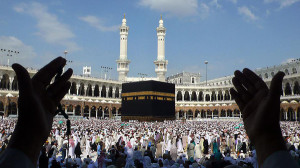Is it really true that Mecca is the biggest pedestrian problem in the world?
 That’s what Dirk Helbing, a German academic who studies crowds and panic, said about the city nine years ago.
That’s what Dirk Helbing, a German academic who studies crowds and panic, said about the city nine years ago.
Mr Helbing, who’s at the Dresden University of Technology, is a pioneer in the field of panic studies. His articles on the flow of pedestrians and cases of stampedes in football stadiums are frequently quoted all around the world. At the request of the Saudi authorities, he sent his doctoral student, Anders Johansson, a Muslim, to Mecca to understand the breadth, depth and scope of the problem of millions of Hajj pilgrims performing the required rituals.
They found that Mecca stood out in so-called escape panic situations, which normally present when people want to escape from a room. They may block each others’ way and when those at the back push and the exit at the front is blocked, people are crushed to death. In Mecca, people have died even in open areas.
Consider the immense issues:
– About a hundred years ago, it’s believed that just 60,000 foreigners performed the Hajj. In 2014, 1.39 million foreigners made up the 2.1 million who made the pilgrimage altogether
– But the relatively confined pilgrimage sites are pretty much the same as they always were. The valley at Mina, where the stoning of the devil takes place, for example, is just 1.9 miles by 1.9 miles
– More and more of the world’s 1.2 billion Muslims are set to head for the Hajj
– Add to that reports of Saudi ambitions to allow five million pilgrims in next year and 30 million by 2020 despite the deadly toll over the years: In 1990, over 1,400; 717 this week; over 300 in 2006; 270 in 1994; 251 in 2004; 118 in 1998.

